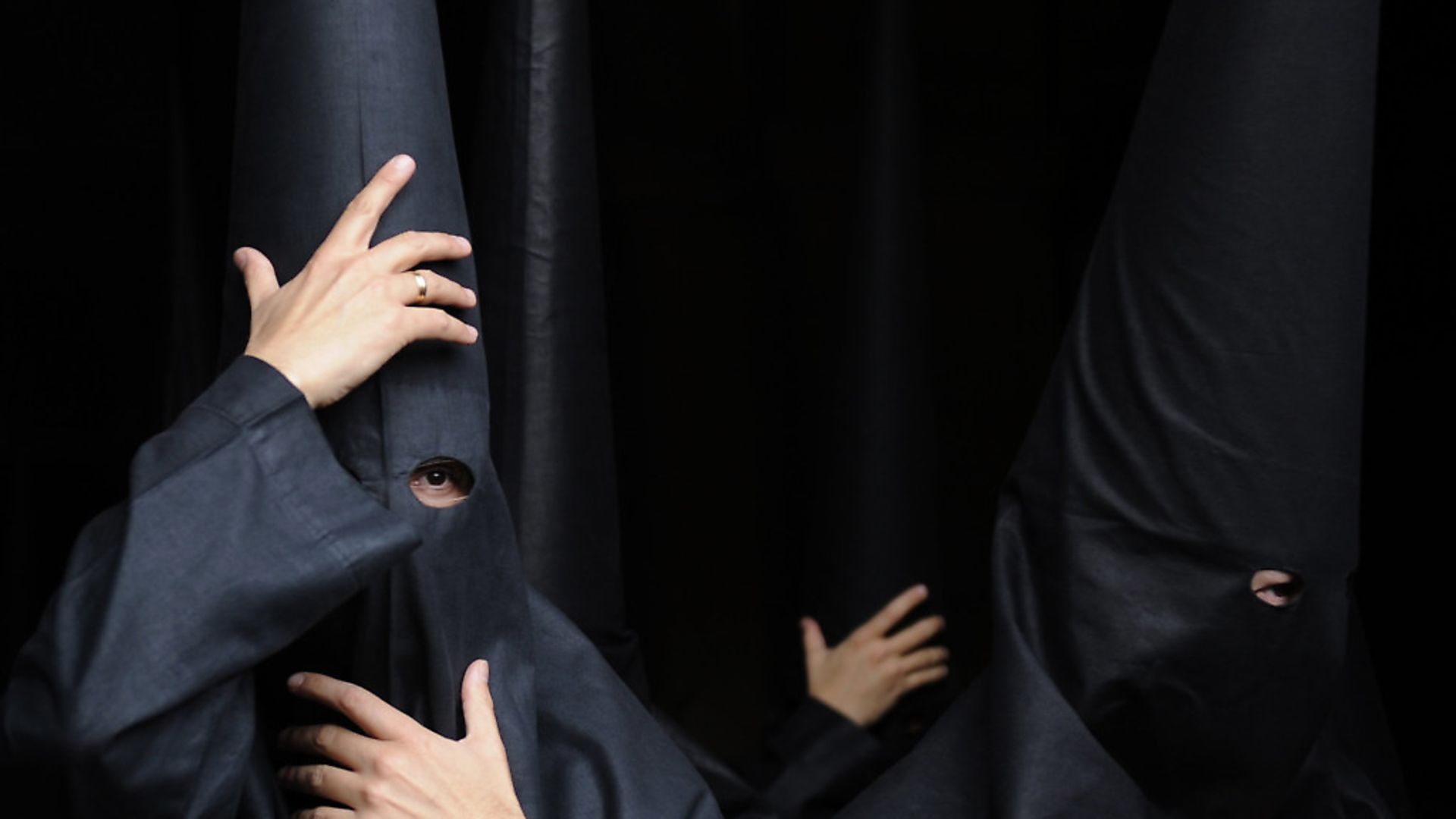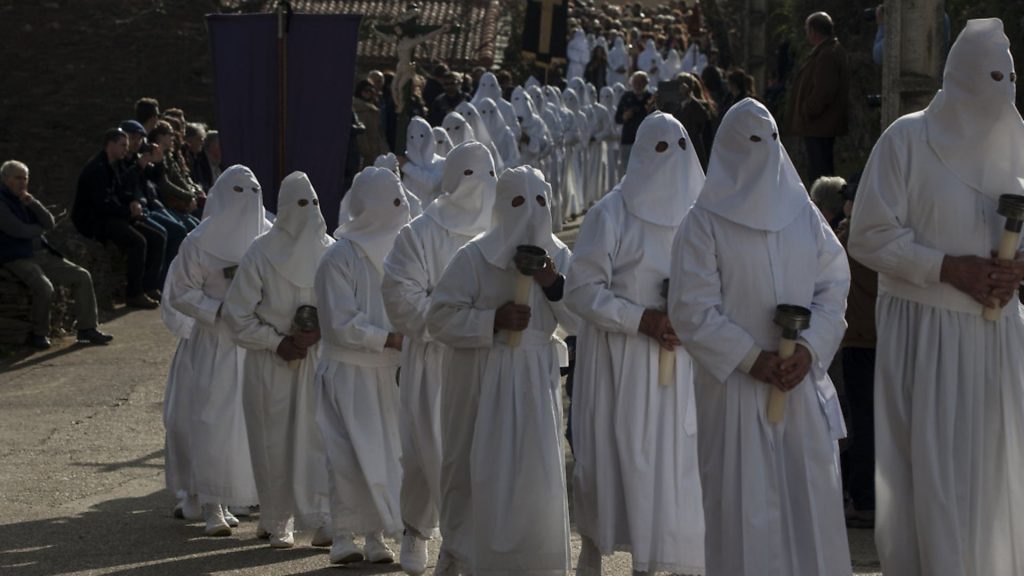
Nowhere does Easter quite like Seville. But could the city’s incredible spectacle begin to fade?

Three years ago, almost to the day, I arrived in Seville during Semana Santa (Holy Week). I was going to live with a friend for two months, and he’d suggested it wouldn’t be the most prudent time to arrive. The city would be brought to a virtual standstill by processions and spectators, he said. Seville’s tiny, terracotta – pink alleyways packed like the proverbial una lata de sardinas. I ignored him and of course he was completely right; the city was under a permanent, holy siege. Imagine Notting Hill Carnival without the sound systems and the Red Stripe, swap the waft of charred jerk chicken for thickly sweet incense, and have it going all night with 3,000 strong processions of hooded men marching to tinny bugles and drums.
Fortunately I loved it, though it wasn’t until everyone left and the city returned to its normal, heat-inspired insouciance that I could confidently locate the correct street in my barrio.
Semana Santa, as it is today, took form in the 17th century. Inspired by the Catholic renaissance of the Counter-Reformation, Archbishop Fernando Niño de Guevara approved the creation of a brotherhood (or cofradia) in the city. That would eventually split, but still forms the basis for the 57 cofradias that now lead processions through the city’s streets over the course of Semana Santa’s eight days, from Palm Sunday to Easter Sunday.
Each cofradia has their roots in a local church, from which they solemnly wend their way through the crowded streets towards their final destination, the catedral on Avenida de la Constitución.
Most immediately striking are the penitentes (also sometimes referred to as nazerones) and with their head-to-toe robes and conical-shaped hat, it’s impossible to ignore the resemblance they bear to the Ku Klux Klan. This is hardly helped by the fact that many of them bear long candles or hewn wooden crosses, and at first it can be unsettling – the Brotherhood does sound like a pretty good conceit for a Stephen King movie, after all – especially when their eyes lock on to yours from behind their cloak.
Many penitentes are barefoot, no mean feat when you consider the longest marches last around 14 hours, but they play second fiddle to the seven feet high pasos (floats) that are the focal point of proceedings. Most cofradias carry two, each bearing garish, Baroque scenes from The Passion Of The Christ, when Jesus was brought into Jerusalem before eventually being nailed to the cross on Cavalry. Many of the sculptures date back to the 17th century and the reverence afforded to them when they come round is stark; expect to be roundly shh’d if you’re chatting on the phone when the Virgin Mary comes past.
The pasos are said to weigh in the region of a ton and are carried on the shoulders of costaleros; the brave, self-flagellating souls who carry the float along its meandering route. Being a costalero is a once-in-a-lifetime opportunity, and seeing as each man bears around 50kg on his shoulders for eight or more hours, it’s not surprising you don’t jump to do it again. Occasionally you see them come up for breath or a cigarette from outside the velvet curtain that circumvents the bottom of the paso and restricts them from view, and they’re immediately recognisable by their curious, towel-like headwear and blowing, purple cheeks.
The most important times for processions is after midnight on the Thursday – La Madrugá – and locals will tell you that is when the processions are their most reverent. Victor Silvestre is a chef at the Taller Andaluz de Cocina who has lived in the city for 25 years. He recommends following the Macarena cofradia during La Madrugá; their Mary statue is the impossibly ornate La Señora de Sevilla and rouses a fevered reaction from spectators wherever she goes on her 14 hour journey. Another local, Natalia Gallego Guardiola, 24, now a lawyer living in Manchester, says that when she was younger she would follow the processions all night, a long and blister-forming process when you consider some don’t wrap up until midday on Good Friday.
Now, the assumption might be that this fairy intense level of devotion would only be undertaken by a person with a deep, religious conviction. Not so, according to Natalia. ‘I am not that into religion, but I’ve always being really keen on Semana Santa. I suppose it is something that you grow up with; my dad is a hermano of one of the biggest cofradías and I grew up seeing him as a penitente.’
This is something that Victor agrees with too. ‘It is more than religion. You will find, of course, very religious people, but others are people that you’ll never see in a church. They participate every year because it’s family tradition and they go the day that their brotherhood parade shows (every brotherhood has just one day) and do the procession.’
It’s an insight that might raises questions about the future of Semana Santa. Natalia says that her ‘generation are much less religious’ and thus ‘definitely thinks it will be less popular in future years,’ which seems a sad thought for one of the most arresting urban events in Europe. Even the most staunch of atheists could surely fail to be impressed by its scale, by how much a city gives itself over to a tradition more than 400 years in the making; if not, they could surely just admire the feats of the costaleros instead.
For Semana Santa to continue it needs those traditions to be continued by people like Natalia and Victor, regardless of their religious beliefs; for unless we respect the culture of the past, our future is going to be ever more homogenised. And the beauty of Europe has always been its hotchpotch diversity.
To that end I’m going out this year for another visit, only this time I’m definitely taking a map.
David Hillier is a freelance writer who specialises in fesitvals, music and night culture. Follow him: @Gobshout
Tips for surviving Semana Santa
1- If you value peace and quiet, don’t stay in the city centre. It’s full-on, 24/7, and the novelty of finding the entrance to your hotel blocked by 500 Sevillianos quickly wears off.
2- You’ll need fuel and there’s no better sugar hit than pestiños. The Andalusian Semana Santa speciality is deep fried dough made with white wine and glazed with honey and sugar.
3- Locals call the densely crowded streets la bulla, and there’s no point in trying to navigate your way down when they’re all jacked up. Suck it up and walk round. Or, better still, order a glass of ribera from the nearest taberna and wait for the crowds to pass.
4- Pick up a copy of El llamador from one of the city’s many information points. It’s the free official guide to Semana Santa, and will give you all the information on procession times.
5- Unless you’re very keen, two days will probably be enough. Do Thursday and Friday then make for the beach at Bolonia.









